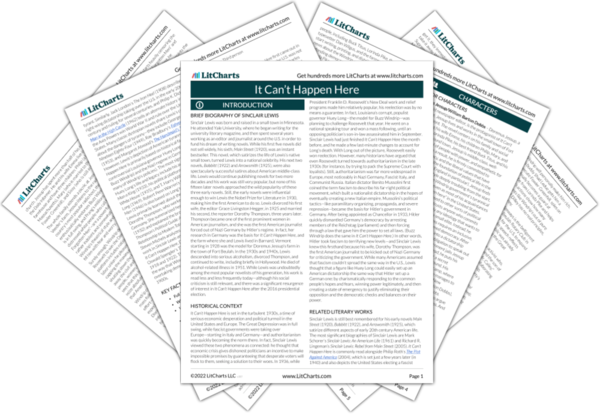Jessup’s job is to read global news—both credible and not—and then republish articles that are relevant to the struggle against Windrip. For instance, the German news will help his readers understand how Windrip is cooperating with other fascist regimes around the world, while the few useful articles from the
New Masses will show them how Windrip’s policies are affecting ordinary people. This job fits Jessup’s political leanings very well because, rather than following one overarching, utopian ideology, he believes in combining many different perspectives to address real political problems.


